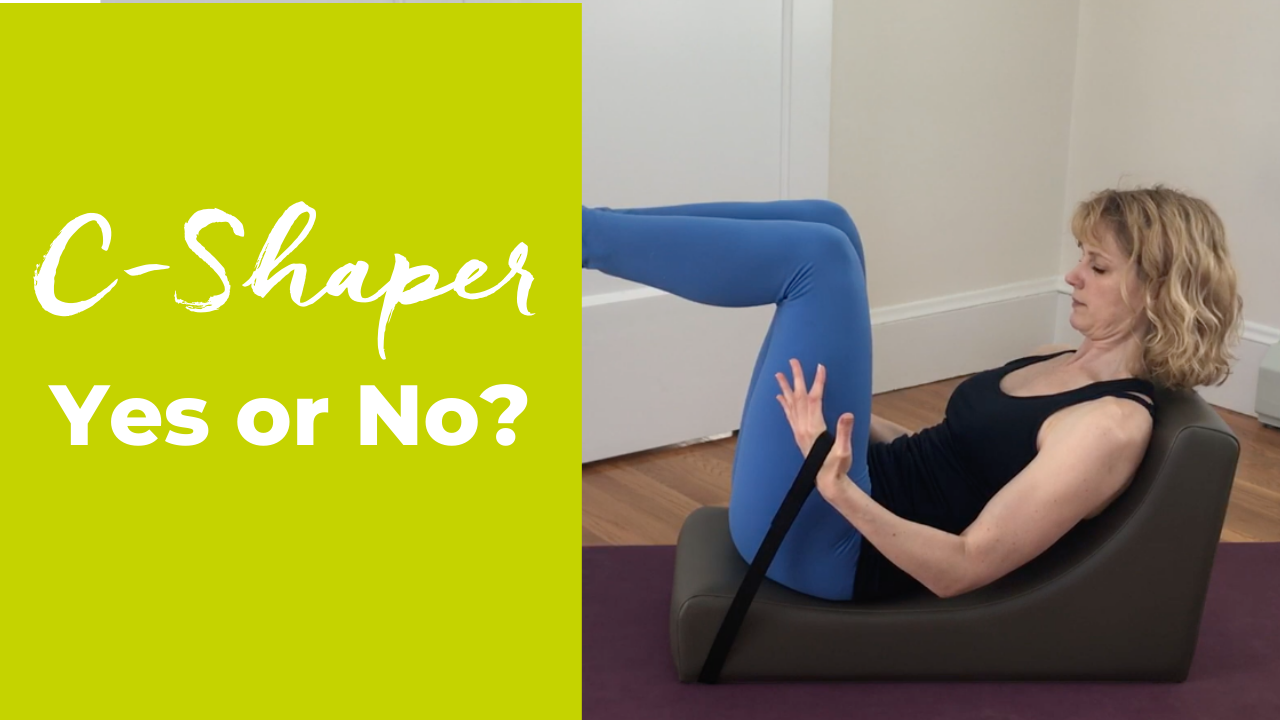Is the C-Shaper Worth It?
May 02, 2020
The C-Shaper has been on my wish list of Pilates accessories for a very long time. I finally decided to make the purchase because I knew that it would be good for one of my students. Isn't that how Joseph Pilates created his equipment? He came up with new inventions because he saw the need for something specific in one of his students.
This particular model is made by Stott Merrithew - they call it Spine Supporter. Balanced Body also makes one and they call it C-shaper. It’s the exact same thing.
That's exactly how I felt. During social distancing - while studios remain closed - I didn’t have my usual Pilates tools available and my student was open to purchasing one of these for herself as well. She has a very similar body type to mine and as a result, we struggle with similar exercises. I decided I wanted to explore the Spine Supporter for myself so that I can teach her on it as well.
How do I like it so far?
When the shipment arrived, I had to test it immediately, of course. I laid down in it and ……. I felt neck tension. No!!! I thought this was supposed to help me with my neck and make the tension magically disappear, right? Well, let’s slow down and back up a bit.
What is the point of the C-Shaper?
It helps you create a C-shape in your spine and it supports your spine in that C-Curve.
When you lie back into the C-Shaper, your goal is to make contact with each of your vertebrae. Each of the bones of your spine should be touching the Spine Supporter. You're going to have to find the perfect position for you. Make sure to spend a little bit of time before you do any exercises to find your maximum supported place. Figure out how far up or down you should be.
Precision is what makes Pilates magical and powerful.
While it doesn’t magically make your neck tension go away, with good instruction we can make it work.
Two Tips to Help You Get Rid of Neck Tension
- Put your hands to the back of your head. If your head is too far forward, then the muscles along the back of your neck are straining. With your hands behind your head, you have tactile feedback to send your head back into your hands, which immediately turns the tension off. It also allows you to drop the weight of your head into your hands a bit.
- Slide your hands into the straps. Turn your palms towards you and bend your elbows into a biceps curl. Lift up isometrically into the straps as you pull the abdominal wall down. This will help bring more activity into the front of the body to help you open the back body. This principle is called reciprocal inhibition. When you work the front body, the back body opens up. When you engage the back body, the front body opens up.
Allow your spine to sink down and back. If it helps you, focus inward, close your eyes, and try to feel the contact point of the spine supporter against each of your vertebrae. You’ll feel a lot of pressure in one section but very light or almost no pressure in another section. Maybe you can even find gaps, actual space between your back and the C-shaper. Scan your whole spine and teach each vertebra - one at a time - to descend, to move backward, to sink deeper.
This is called equal distribution of load. If each of your vertebrae moves a little bit than the flexion load is distributed among many, instead of all the flexion happening in one or two vertebrae. Distribution of load is a really important concept when we talk about the spine.
Should You Invest In a Spine Supporter?
You should invest in a C-Shaper if you have a student who needs more mobility into spine flexion that you can’t fix with other tools. If you’ve tried everything else and the problem is a lack of feedback and awareness, then yes, the C-shaper is the tool you need.
Make sure not to rush into the exercises. Make friends with the machine first. Learn to work WITH the equipment, instead of fighting against it. You have to let it support you. If you fight it, then you’re not going to get anywhere. By working too hard, you could potentially create more tension instead of allowing openness, freedom, and space where you need it.
Once you’ve found your happy place, you can try to go one step further. Lift one knee up, then the second, and hold this position. I know it might not look like a lot of effort, but you’ll be working incredibly hard.
Do I Think The Purchase Was Worth It?
Well, I can’t swear by it yet, but I'm really, really hopeful. My personal goal is to create a better chest lift for myself. So I'm going to challenge myself to work on this for a few minutes every day for the month of May, and I'll check in with you at the end of the month to see how much progress I've made.
I'd love to hear from you: Do you have a C-Shaper? Are you planning on getting one? Shoot me an email.










